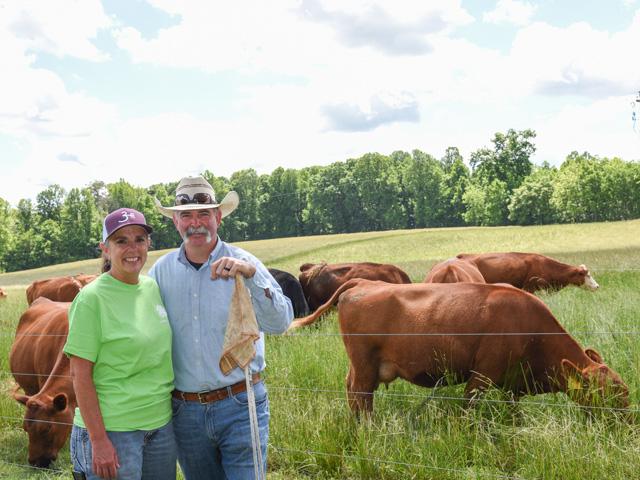
How to Finish Cattle for High-Quality Beef
If your idea of a perfect steak includes the description "grain-finished", you're in the majority. Only an estimated 5% of the United States finished beef supply is forage-finished. However, if you market your cattle as freezer beef, in a farmers market or sell to a trendy restaurant, you're likely to get requests for grass-finished beef. The good news is it is possible to produce high quality beef on forages.
THINK LIKE A GRASS FARMER
Chad and Kim Woods regularly get their forage-finished cattle into the equivalent of the low choice grade, but they had a head start. Kim's father and uncle ran a dairy and were grazing their Guernseys on a mix of high-quality forages before grass-based dairies were common.
"They were doing rotational grazing in the '80s," said Chad. While Kim's uncle has passed away, her dad, Sam, 90, is still a partner in Spring Crest Farm, along with Kim's mom, Gail, who also have the last name of Woods.
Chad said, "He (Sam) was innovative with soil and pasture management, he was open-minded and worked with the soil and water. It was really good for Kim and me."
While still in the dairy business, they used alfalfa and orchardgrass at times for grazing. However, neither forage handled the hot summers well. So, three years ago when the Woodses swapped from selling horse hay to a forage-finished beef enterprise alone, they settled on novel endophyte tall fescue after seeing how well it did for hay. While they still have some Kentucky 31 tall fescue on their Hurdle Mills, North Carolina, operation, the toxin found in Kentucky 31 slows down gains, hampers reproduction and milk production, and makes cattle more susceptible to heat stress. As a result, they have already renovated around 100 acres with Martin 2Protek.
"It's done well. We've grazed it close. We've hayed it. We've spring stockpiled it. It is a little hardier," said Chad. He thinks the variety is also more upright than most of the other novel endophyte varieties, a characteristic they want so they have the option of cutting it for hay.
Once it is established, and they know they don't have a weed problem, they also add ladino and red clovers.
Questions about this Article?:

Copyright © 2021-2025. All rights reserved
This website stores cookies on your computer. These cookies are used to collect information about how you interact with our website and allow us to remember you. We use this information in order to improve and customize your browsing experience and for analytics and metrics about our visitors on this website. To find out more about the cookies we use, see ourPrivacy Policy.